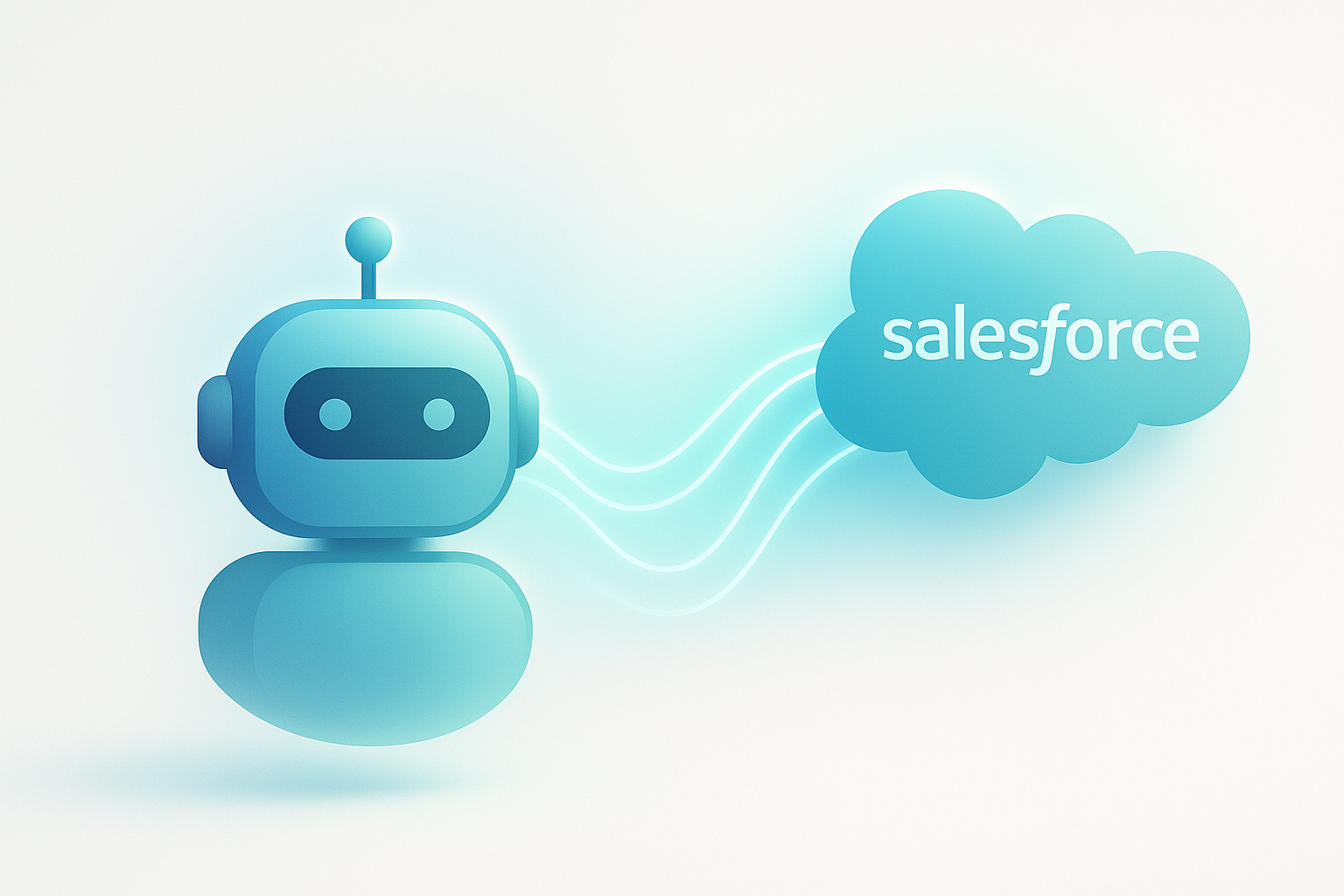If you rely on the phone to book jobs, answer questions, or qualify leads, a modern voice AI phone system can keep calls moving 24/7, block time-wasting spam, and hand hot leads to the right person—without hiring another full‑time receptionist.
Research highlight
- U.S. consumers receive roughly 4 billion robocalls per month—one reason businesses need smarter screening (FCC). (fcc.gov)
- Nearly 80% of consumers say the phone channel is important when communicating with businesses (TransUnion, 2024) (TransUnion newsroom). (newsroom.transunion.com)
- Applying generative AI to customer care can lift productivity by an estimated 30–45% (McKinsey, 2023) (McKinsey analysis). (mckinsey.com)
Why your phone line needs Voice AI now
The old way—ring, wait, voicemail—costs you bookings. Customers want quick answers, and your team can’t be everywhere at once. Voice AI fills the gap by greeting callers instantly, collecting details, and routing or booking without delay. It also screens obvious spam so your staff focuses on real customers.
What’s dragging teams down
- Missed calls during lunch, after hours, or peak times
- Unqualified or duplicate inquiries that eat up minutes
- Spam/robocalls that pull your team off paying work
- Manual note‑taking and CRM updates
How Voice AI changes the game
- Answers every call 24/7 with your brand‑approved script
- Verifies intent, captures contact details, and books appointments
- Detects likely spam and can drop or quarantine those calls
- Logs conversations and outcomes to your CRM automatically
Reality check: keep an easy human escape hatch
Only about 14% of customer service issues are fully resolved in self‑service, even for simple topics—so make live transfer or call‑back easy (Gartner, 2024). Gartner press release. (gartner.com)
What Voice AI can do on day one
- Answer and route calls automatically: greet callers, ask clarifying questions, and send them to the right person or voicemail box with a transcript.
- Book appointments and estimates: connect to your calendar and offer the next open slot, then send confirmations by SMS or email.
- Capture leads consistently: collect name, phone, email, and project details on every qualified call, then push to your CRM.
- Block obvious spam: use allowlists, blocklists, and metadata checks to drop nuisance calls before they hit your team.
- Follow up by text: send directions, prep instructions, or next steps automatically after a call ends.
Pro tip: write once, reuse everywhere
Draft your greetings, intake questions, and after‑hours policy once. Reuse the same, approved language for the phone agent, your website chat, and SMS follow‑ups so customers get a consistent experience.
Real ROI: fewer misses, faster routing
Two forces drive ROI: fewer missed calls and shorter handling time. Generative AI can offload repetitive work and speed up triage, while your team focuses on high‑value conversations. Analysts estimate productivity gains of 30–45% in customer care from generative AI, depending on the workflow mix. McKinsey. (mckinsey.com)
Adoption is paying off: many CX leaders already report positive returns from generative‑AI‑powered service initiatives. In one 2024 industry report, 83% of leaders using genAI in CX saw positive ROI. Zendesk CX Trends 2024. (zendesk.com)
Quick back‑of‑the‑napkin math
Say you miss 6 calls/day and convert 1 in 5 into paid work worth $250. Catching even 1 more lead/day is ~$250 revenue/day—over $6,000/month—before time savings. Your numbers will vary, but this is why owners call Voice AI a “second receptionist” that never sleeps.
What to measure
- Answer rate (overall and after‑hours)
- Time‑to‑answer and first‑call resolution
- Bookings created and show rate
- Spam calls blocked
- CSAT after AI vs. live interactions
Implementation playbook (checklist)
- Pick your number: use a new local number for the AI agent, then forward your main line—or forward just after‑hours.
- Map your call paths: sales, service, emergencies, and voicemail fallbacks; define what qualifies a “hot” lead.
- Write your script: greeting, intake questions, scheduling rules, and escalation words (“transfer,” “urgent,” “billing”).
- Connect your tools: hook into calendars and CRM so bookings, notes, and transcripts sync automatically. See our integrations.
- Run a 2‑week pilot: monitor 10–20 sample calls/day, tune prompts, and tighten spam filters.
- Train your team: show staff the transcript log, how to request a call‑back, and when to jump in live.
- Set KPIs and review monthly: track answer rate, booking rate, and customer satisfaction.
Compliance, privacy, and trust
Inbound vs. outbound matters. Using an AI voice to answer incoming calls to your business number is different from making outbound robocalls. In February 2024, the FCC clarified that robocalls using AI‑generated voices are illegal under the TCPA—aimed at stopping deceptive outbound campaigns. Associated Press coverage. (apnews.com)
Customers still want to talk to a real person for complex issues. Keep live‑transfer available and disclose that your receptionist is AI at the start of the call. Also, document your recording and retention policy and follow state/federal rules for call recording and consent.
Spam and caller trust
Robocalls and spoofing erode trust, but they also create an opportunity: a well‑configured Voice AI can filter and deflect obvious spam so your real customers get through faster. The FCC notes U.S. consumers get about 4 billion robocalls each month—motivation enough to add smart screening (FCC). (fcc.gov)
Despite spam fatigue, consumers still value the phone for important matters; a 2024 study found nearly 80% consider phone calls important for communication with businesses (TransUnion). (newsroom.transunion.com)
How Small Business Chatbot helps
Fast start: You can be up and running quickly—our homepage outlines a setup that takes under a minute once your site is connected. See how it works.
Built for small teams: Our AI voice agent answers and routes calls, books appointments, and can send text follow‑ups—so you don’t miss leads when you’re on a job.
Plays nicely with your stack: Connect calendars and CRMs you already use. Explore popular options on our integrations page.
Proof from peers: Read what other owners say about responsiveness, setup, and results on our customer reviews page.
Frequently asked questions for voice AI phone systems
1) Is Voice AI legal for my business phone line?
Yes—using AI to answer inbound calls to your own number is lawful. Regulations target deceptive or unsolicited outbound robocalls using AI voices. Always disclose when an AI receptionist answers and follow call‑recording consent rules in your state.
2) Will an AI receptionist replace my staff?
Think of Voice AI as a tireless teammate that handles repetitive calls and after‑hours coverage. Your team still takes nuanced conversations and escalations; the AI speeds intake, books time, and keeps records tidy. Many leaders report positive ROI when AI augments, not replaces, agents (see industry data). (zendesk.com)
3) How long does setup take?
Most small teams start with a simple greeting, 5–8 intake questions, and one calendar connection. You can route your main number to the AI agent immediately, then expand paths over time. Our product is designed for quick setup so you see value fast.
4) Can I keep my existing number?
Yes. The common approach is to forward your existing line to the AI number during all hours or just after‑hours. You can still take live calls; the agent handles overflows.
5) How does spam filtering work?
Providers combine blocklists, call reputation signals, and logic in your script (for example, hanging up when no intent is detected) to reduce nuisance calls. You’ll review logs and fine‑tune rules during the first two weeks.
6) What should I integrate first?
Start with your calendar and CRM so bookings and transcripts are captured automatically—this protects follow‑up and lets you measure ROI. Browse supported tools on our integrations page.
7) How do I measure success?
Track answer rate, time‑to‑answer, booking rate, spam blocked, and CSAT. Compare after‑hours and peak‑time metrics against your baseline for a clean read on impact.



